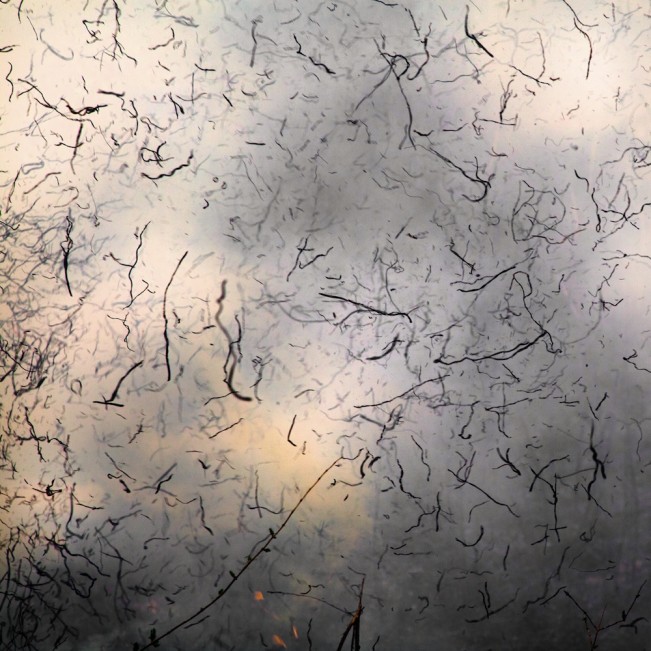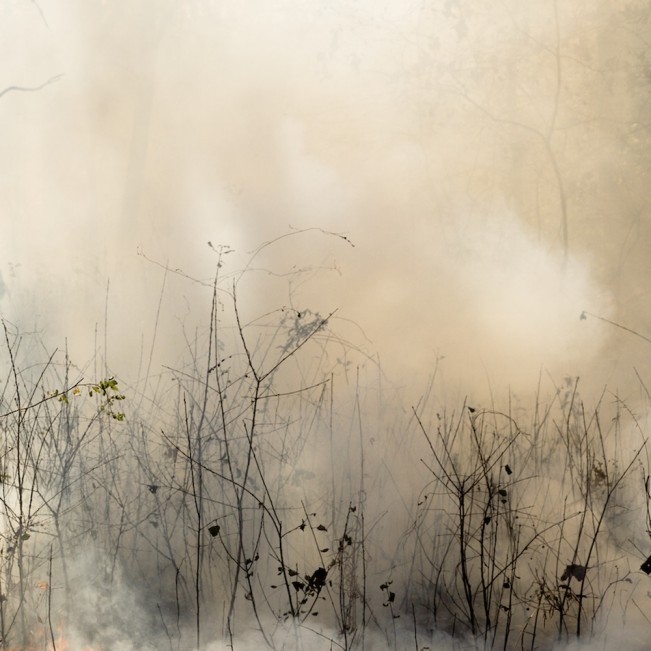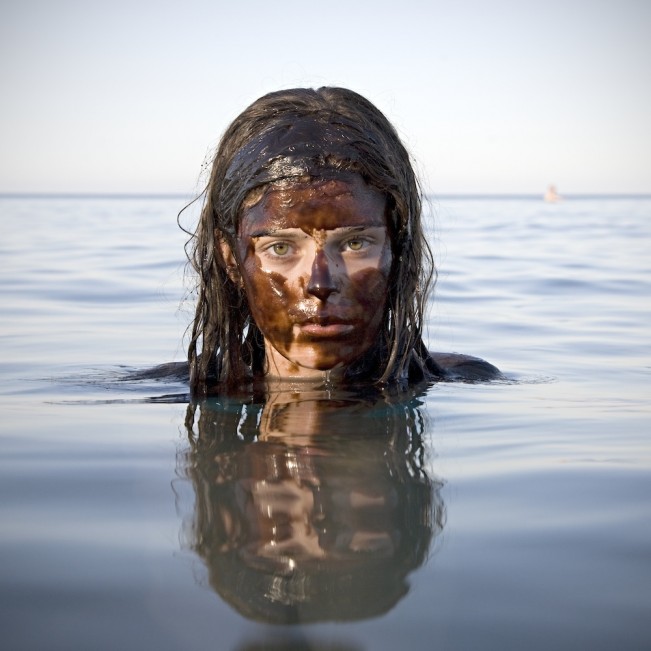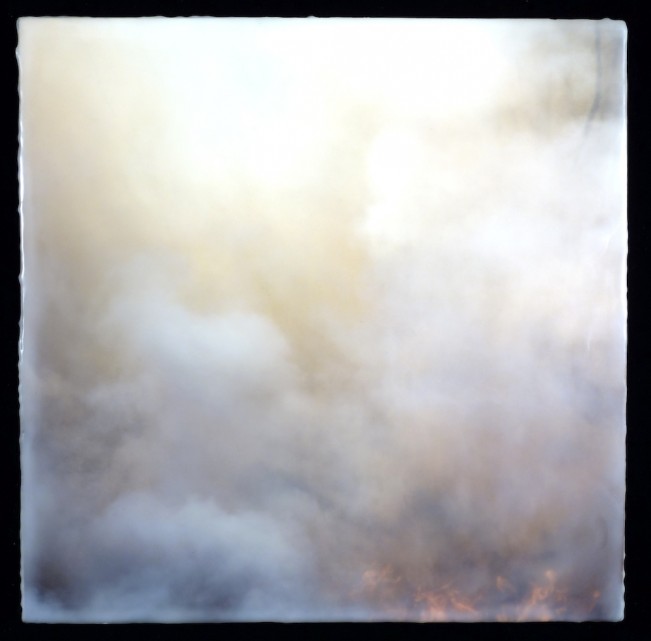The Jane Fulton Alt Interview: The Burn
A number of years ago, someone told me I needed to know Jane Fulton Alt. It was some of the best advice I’ve received in the photo world, and I am thrilled to share the work and the new monograph of a friend I so deeply admire. Jane has that rare ability to consider many subjects and ways of working with finesse and insight, exploring universal issues of humanity and the non – material. She also manages to balance her art making with family, a career as a social worker, numerous charities, and time in her beloved adopted city of New Orleans. Jane opened an exhibition at the Griffin Museum’s Atelier Gallery on October 3rd while will run through December 8th, 2013. Jane will be giving an artist lecture on October 10th at 6:15 pm.
Jane was born in Chicago has been active in the arts much of her lifetime, as an image maker and mentor. Jane attended the University of Michigan and the University of Chicago and has studied art and photography at the Evanston Art Center, Columbia College and the Art Institute of Chicago. She is the recipient of the 2007 Illinois Arts Council Fellowship Award, multiple Ragdale Foundation Fellowships, and three time winner of Photolucida’s Critical Mass for her Katrina and Burn portfolios. She has authored Look and Leave: Photographs and Stories of New Orleans’s Lower Ninth Ward and her Crude Awakening portfolio was published worldwide.
Her new book, The Burn, will be released in October of 2013 by Kehrer Verlag. Jane has also created a second, hand-made book, She received the Photo District News 2011 Curators Choice Award and the 2012 Humble Arts 31 Women in Art Photography award for this work. Jane’s photographs are in the permanent collections of the Museum of Fine Arts in Houston, Smithsonian National Museum of American History, New Orleans Museum of Art, De Paul University Art Museum, Southwest Museum of Photography, Beinecke Library at Yale University, Centro Fotografico Alvarez Bravo in Oaxaca, Mexico, Center for Photography at Woodstock, Harry Ransom Humanities Research Center, and the collection of William Hunt. In addition to being a photographer, Jane is a clinical social worker who has been in practice for over 40 years. She resides in Evanston, Illinois with her husband. Burn can be purchased here.
These photographs are part of a series begun in 2007 when I observed my first controlled prairie burn. I was immediately struck by the burn’s visual and expressive potential, as well as the way it evoked themes that are at the core of my photographic work. A controlled burn is deliberately set; its violent, destructive force reduces invasive vegetation so that native plants can continue to prosper. The elements of the burn—the mysterious luminosity, the smoke that both obscures and reveals—suggest a liminal space, a zone of ambiguity where destruction merges with renewal. These images of regenerative destruction have a personal significance—I photographed my first burn at the same time my sister began a course of chemotherapy—yet they constitute a universal metaphor: the moment when life and death are not contradictory but are perceived as a single process to be embraced as a whole.

Congratulations on the book! How did it come about?
Alexa Becker of Kehrer Verlag saw The Burn portfolio a year and a half ago at Foto Fest in Houston and expressed interest in publishing the work. That was the beginning. I had no idea how to approach organizing and presenting the work in a book. The learning curve was steep, and I had lots of help. The end product reflects the input of many talented and generous people.

Can you tell us about the project?
Understanding the human condition, our universal need for connection and the inevitability of separation, has been the primary focus of my photographic life. How we enter and leave this world has been at the heart of this investigation. I began photographing births with the understanding that our very first separation occurs at the moment the umbilical cord is cut. After several years of photographing births, I turned my attention to the final separation from life, the last breath, photographing hospice patients, slaughterhouses, and autopsies in addition to witnessing bodies being prepared for burial. I traveled to the holy cremation site of Varanasi in India, and to Mexico to observe the Day of the Dead. In the wake of Hurricane Katrina I photographed the remains of a community with an eye toward any hint of renewal.
In 2007, my interest in the universal mystery of birth and death became personal. That spring, my first grandchild was born and my sister was diagnosed with cancer, all within the space of a few days. The juxtaposition of these two events stunned me.
 At the same time, I witnessed a fire, a controlled burn in a nearby prairie, while attending an artist residency at the Ragdale Foundation outside of Chicago. Compelled by the visual and expressive potential of this man-made conflagration, I joined a team of restoration ecologists to photograph my first burn. The smoke and the fire challenged me in ways I could not have anticipated and comforted me in a way I never expected. I have spent the last seven years photographing controlled burns in prairies, woodlands and wetlands in Lake Forest, Illinois, while simultaneously watching my grandchild and sister follow their separate paths of rising into and falling away from life.
At the same time, I witnessed a fire, a controlled burn in a nearby prairie, while attending an artist residency at the Ragdale Foundation outside of Chicago. Compelled by the visual and expressive potential of this man-made conflagration, I joined a team of restoration ecologists to photograph my first burn. The smoke and the fire challenged me in ways I could not have anticipated and comforted me in a way I never expected. I have spent the last seven years photographing controlled burns in prairies, woodlands and wetlands in Lake Forest, Illinois, while simultaneously watching my grandchild and sister follow their separate paths of rising into and falling away from life.
 When looking thru the viewfinder the parallels between the burn on the prairie and the burn in my sister’s body were immediately apparent. Just as the fires were clearing the way for new growth, so too was the chemo therapy allowing healthy cells to replace the cancerous ones. Through creating this body of work, I was able to more fully understand and embrace nature’s inevitable life cycles.
When looking thru the viewfinder the parallels between the burn on the prairie and the burn in my sister’s body were immediately apparent. Just as the fires were clearing the way for new growth, so too was the chemo therapy allowing healthy cells to replace the cancerous ones. Through creating this body of work, I was able to more fully understand and embrace nature’s inevitable life cycles.

What does it mean to you to have this particular body of work in book form?
It is a gift. I was able to turn my full attention to birthing the book after my sister’s passing. Working on it this past year has been an incredible learning experience and a means by which I was able to assuage my grief.
Having the entire project between two covers is tremendously satisfying. As a vehicle for the art, the book reaches many more viewers. I love the fact that you can carry it with you – an entire exhibition all within a 9”x9” object. As Tolstoy stated, art needs the viewer to be complete: “Art is a human activity consisting in this, that one man consciously, by means of certain external signs, hands on to others feelings he has lived through, and that other people are infected by these feelings and also experience them.” Anyone who views it is taking part in a very important aspect of the life of the work.
I should also mention that I collaborated with a book and paper artist, Teresa Pankratz, on a limited – edition, artist – made book to help finance the trade book. This volume, between fire/smoke, is more of an art object in that it contains Japanese papers, poetry and an encaustic piece. It is really breathtaking.

You are a very unique image maker, drawn to lots of ways of working –conceptual, portraiture, landscape, and documentary–how does your fluidity in working influence projects, or does it?
I think it is the other way around…the project defines the form, which has been fluid for me.
Flexibility and exploration have been the hallmarks of my creative life. I am interested in expressing myself in the strongest way possible, and that has been manifested by using various cameras and materials that include wax, gold leaf, copper and wood.
I travel to Mexico every year with Chicago Chef Rick Bayless and his staff. Upon returning, I create work that reflects the region we visited. Those opportunities have really pushed my creative process. Through the Mexico work I began experimenting with wax, gold leaf, xerox transfers, copper and text. One year I created a monarch butterfly installation in which I printed and cut out more than 1000 butterflies to affix to the wall along with a photo of Frida Kahlo and her famous quote “Who need feet when you have wings to fly?” I really love trying new things.
I initially used wax to introduce real – time light into the photographs. When I started shooting the burn, I noticed immediately how many of the images had a waxy quality to them. Just a year ago, I decided to use the wax (and ash) on the burn images. They become a totally different experience for the viewer, more object – like.

As a mentor and established photographer, do you have advice to pass on to emerging photographers?
Photograph what you love, what you are passionate about. Curiosity is essential. Get to know your subject intimately; it will show in your work. Know what your motivations are for the work. I work from my heart but am really appreciative of work that is from the head. The John Baldessari painting, “Solving Each Problem As It Arises,” offers some insight into subject matter.
Have you found any particular social media effective to promoting your work?
I started a blog years ago. It was a platform to share, teach, inspire, rant and rave, as well as to promote my new works. At a point in time I was blogging daily and it was a great vehicle.
I use Facebook and to a lesser extent, Twitter, to maintain an online presence. It is important to be out there. It takes years to build relationships with other photographers and curators. Facebook is a great way to keep up with people…but it is important to use it carefully. Sometimes I think people can lose their grasp on things by spending too much time in cyber-land and not enough time in their own heads. I have resisted getting involved with any other platforms such as Pinterest, Google +, Linkedin…I mean, how much time does anyone have?
As you know, the business of photography is a totally different skill set and equally important to making the work. It is helpful to have a gallery working along with you to get the work out there.
Do you still attend portfolio reviews?
Yes, for very particular reasons and focus. I attended a couple of reviews at Filter Photo in Chicago last year and recently, this year. Two brief meetings were very instructive and helped me to begin thinking about creating an artist book and about revisiting an older project. I always try to attend The New Orleans Photo Alliance’s PhotoNOLA, as I love the organization and the city. Critical Mass, an online review sponsored by Photolucida, is a really efficient way to have your work seen. And then there is Houston’s Foto Fest, the mother of all portfolio reviews. I do think that Wendy Waitress and Fred Baldwin, the originators, revolutionized the photography world. What other art form allows such access to collectors and curators? However, portfolio reviews seem to be proliferating, and one needs to be selective about which to attend. We may be turning the corner toward saturating the market.
What’s next?
Last spring I shot video footage of the burn. I have to say that it is spectacular. I would love to shoot more with an eye toward creating an installation. Also, I’ve been collecting ash remains from the burns and have begun incorporating them into my encaustic pieces. I like the idea of making reliquaries but that idea is still in its infancy stage.
I am also revisiting some of my earlier work…more on that later.
Any thoughts on the current fine art photography world?
Some really exciting work is being made. I am in a constant state of awe at how the field continuously morphs into something new and fresh. People keep pushing the edges, which is really thrilling.
What makes you laugh?
My grandchildren.
And finally, describe your perfect day….
What a fun question!
Waking up half an hour before daybreak on a hot summer morning, riding my bike to Lighthouse Beach on Lake Michigan and swimming, swimming, swimming, while watching the sun rise as the light dances on the surface of the velvety smooth water, birds and dragonflies soaring overhead. Then coming home and working in my studio for a few, very productive hours, spending some time with family (including but not limited to my grandchildren), watching caterpillars in my garden transform from chrysalises into butterflies on the milkweed plants. Sipping margaritas followed by a Mexican fiesta dinner cooked by my husband in our candle – lit home with friends and family while being serenaded by New Orleans singer extraordinaire – John Boutte, then retiring to rocking chairs on the front porch watching the gradual dimming of the day, listening to the cicadas and waiting for the fireflies to make their grand appearance.
Now THAT is a perfect day.

The three images above are from Jane’s Crude Awakening portfolio. Here is her description of the work:
Living on the shores of Lake Michigan, I am acutely aware of the disastrous toll the oil spill in the Gulf of Mexico has taken on all forms of life, especially as our beaches opened to the 2010 swimming season. This environmental, social and economic catastrophe highlights a much larger problem that has inflicted untold suffering as we exploit the earth’s resources worldwide. We are all responsible for leading lives that create demand for unsustainable energy. We are also all responsible for the solution and we must work together to protect the balance of life.
Summer 2010
Posts on Lenscratch may not be reproduced without the permission of the Lenscratch staff and the photographer.
Recommended
-
Time Travelers: Photographs from the Gayle Greenhill Collection at MOMADecember 28th, 2025
-
Suzette Dushi: Presences UnseenDecember 27th, 2025
-
Ragne Kristine Sigmond: Portraits of Painterly LightDecember 2nd, 2025
-
Mary Pat Reeve: Illuminating the NightDecember 1st, 2025




























































































